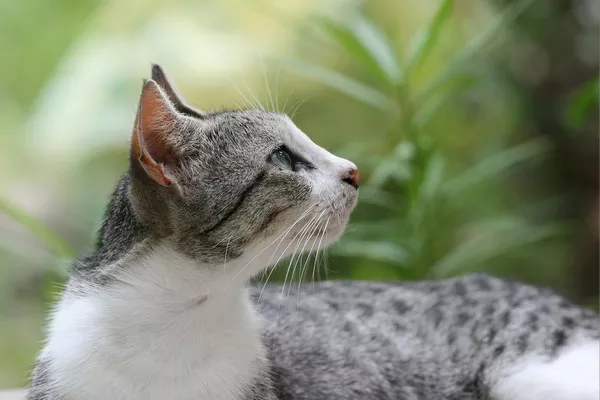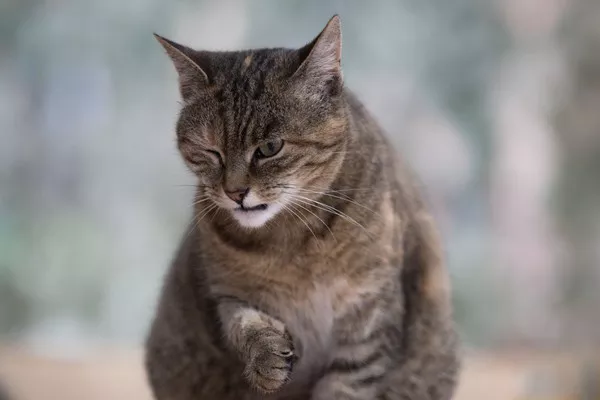Cats are often perceived as independent creatures, capable of fending for themselves and adapting to various environments. However, beneath their aloof exterior lies a complex emotional world. When a cat changes owners, it can be a significant life event that impacts its mental and emotional well-being. Understanding the psychological effects of such a transition is crucial for both new and existing cat owners. This essay explores the trauma associated with a cat changing owners, the factors that influence their emotional responses, and the steps that can be taken to ease the transition for both the cat and the new owner.
The Nature of Feline Attachment
Understanding Cat Behavior
Cats are often misunderstood as solitary animals that do not form strong attachments to their human companions. However, research has shown that cats can develop deep bonds with their owners. These bonds are often formed through routine interactions, positive reinforcement, and shared experiences. Cats are creatures of habit, and they thrive in stable environments where they feel secure.
Attachment Styles in Cats
Studies on feline behavior have identified different attachment styles in cats, similar to those observed in dogs and even human infants. These attachment styles can be categorized as:
Secure Attachment: Cats with secure attachments feel safe and comfortable around their owners. They are more likely to explore their environment and engage in social behaviors.
Avoidant Attachment: These cats may be less responsive to their owners and more independent. They may not seek out human interaction as frequently.
Anxious Attachment: Cats with anxious attachments may exhibit clinginess or anxiety when separated from their owners. They may become distressed in new environments or when faced with changes.
Understanding these attachment styles is crucial in assessing how a cat may react to changing owners.
The Trauma of Changing Owners
Emotional Distress
When a cat changes owners, it can experience a range of emotional responses, including:
Anxiety: A new environment can be overwhelming for a cat. The unfamiliar sights, sounds, and smells can trigger anxiety, leading to stress-related behaviors such as hiding, vocalizing, or aggression.
Confusion: Cats thrive on routine. A change in ownership disrupts their established routines, leading to confusion and uncertainty about their new environment.
Loss: Cats may grieve the loss of their previous owner and the familiarity of their former home. This sense of loss can manifest in various ways, including changes in appetite, lethargy, and withdrawal.
Behavioral Changes
The emotional distress caused by changing owners can lead to significant behavioral changes in cats, including:
Increased Aggression: Some cats may respond to stress by becoming more aggressive, either towards their new owner or other pets in the household.
Withdrawal: Cats may become withdrawn and less interactive with their new owner, preferring to hide or isolate themselves.
Changes in Eating Habits: Stress can lead to changes in appetite, with some cats eating less or refusing food altogether, while others may overeat as a coping mechanism.
Litter Box Issues: Stress can also lead to inappropriate elimination, where a cat may urinate or defecate outside the litter box due to anxiety or confusion.
Physical Health Implications
The emotional trauma associated with changing owners can also have physical health implications for cats. Stress can weaken the immune system, making cats more susceptible to illness. Additionally, prolonged stress can lead to conditions such as:
Feline Idiopathic Cystitis (FIC): A painful bladder condition often exacerbated by stress and anxiety.
Gastrointestinal Issues: Stress can lead to vomiting, diarrhea, and other gastrointestinal problems.
Behavioral Disorders: In some cases, the trauma of changing owners can lead to the development of chronic behavioral issues that require intervention.
Factors Influencing the Level of Trauma
Several factors can influence how traumatic the experience of changing owners is for a cat:
Previous Experiences
A cat’s past experiences can significantly impact its response to a new owner. Cats that have experienced multiple changes in ownership or have been subjected to neglect or abuse may have heightened anxiety and fear in new situations. Conversely, a cat that has had a stable and loving environment may adapt more readily to a new owner.
Age of the Cat
The age of the cat can also play a role in how it copes with changing owners. Kittens are generally more adaptable and may adjust more easily to new environments. In contrast, older cats may have established routines and attachments that make them more resistant to change.
Personality Traits
Just like humans, cats have unique personalities that influence their behavior. Some cats are naturally more adaptable and resilient, while others may be more sensitive and prone to anxiety. Understanding a cat’s individual personality can help predict how it may react to changing owners.
New Environment
The new environment itself can also impact a cat’s adjustment. A calm, quiet home with a predictable routine is likely to be less stressful for a cat than a chaotic household with multiple pets or young children. Providing a safe space where the cat can retreat and feel secure is essential during the transition.
Introduction to New Owners
The manner in which a new owner introduces themselves to the cat can greatly affect the transition. A gradual introduction, allowing the cat to explore its new surroundings at its own pace, can help reduce anxiety. Conversely, overwhelming the cat with attention or forcing interactions can lead to increased stress.
Easing the Transition for Cats
To minimize the trauma associated with changing owners, there are several steps that both the new owner and previous owner can take to facilitate a smoother transition:
Preparing for the Move
If possible, the previous owner should prepare the cat for the transition by:
Maintaining Routine: Keeping the cat’s routine as normal as possible in the days leading up to the move can help reduce stress.
Familiar Items: Sending the cat to its new home with familiar items, such as toys, bedding, or even a piece of clothing from the previous owner, can provide comfort.
Creating a Safe Space
Upon arriving in the new home, it’s essential to create a safe space for the cat. This can include:
Designated Room: Setting up a quiet room with the cat’s essentials (litter box, food, water, and bed) allows the cat to acclimate to its new environment gradually.
Minimizing Stressors: Keeping the environment calm and quiet, especially during the initial days, can help the cat feel more secure.
Gradual Introduction
New owners should take a gradual approach to introduce themselves to the cat:
Allow Exploration: Let the cat explore its new surroundings at its own pace. Avoid forcing interactions; instead, allow the cat to approach when it feels comfortable.
Positive Reinforcement: Use treats and gentle, soothing voices to create positive associations with the new owner.
Patience and Understanding
Patience is key during this transition period. New owners should be prepared for potential behavioral changes and understand that it may take time for the cat to adjust. Providing consistent care, attention, and love can help build trust and strengthen the bond between the cat and its new owner.
Seeking Professional Help
If a cat exhibits severe anxiety or behavioral issues following a change in ownership, it may be beneficial to consult with a veterinarian or a feline behaviorist. They can provide guidance on managing stress and anxiety and recommend strategies or medications if necessary.
Conclusion
Changing owners can be a traumatic experience for cats, impacting their emotional and physical well-being. Understanding the nature of feline attachment and the various factors that influence a cat’s response to this transition is crucial for both new and existing owners. By taking proactive steps to ease the transition, such as creating a safe environment, allowing gradual introductions, and demonstrating patience, new owners can help their feline companions adjust to their new home.
Ultimately, recognizing and addressing the emotional needs of a cat during this significant life change is essential for fostering a strong bond and ensuring the cat’s long-term happiness and health. As responsible pet owners, it is our duty to provide the support and care that our feline friends need during times of change, helping them navigate the challenges of new beginnings.
Related topic:



























